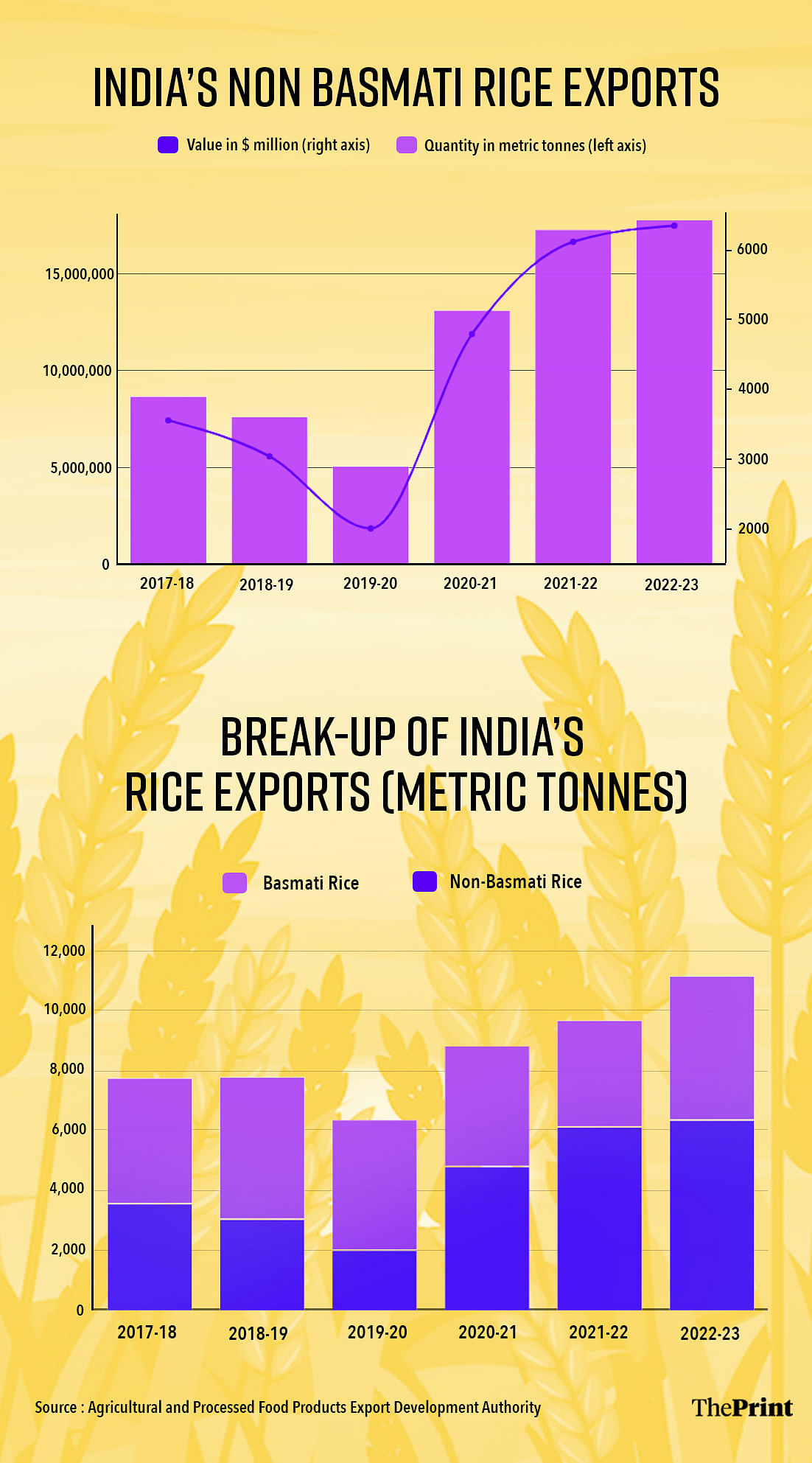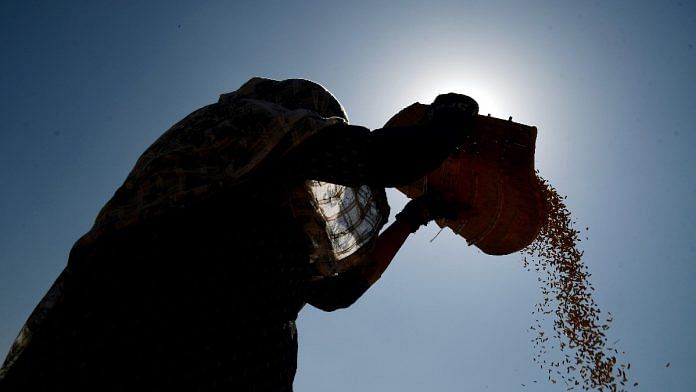New Delhi: India banned the export of non-Basmati white rice Thursday, a move that could deal a significant blow to the global rice market. The country accounts for around 40 percent of global rice exports, and is among the most competitively priced sources of Asian rice, according to agencies that closely track the market.
The Directorate General of Foreign Trade (DGFT) Thursday issued a notification shifting the export of non-Basmati white rice from the ‘free’ export category to the ‘prohibited’ category. However, the notification added that some export would be allowed with the Union government’s permission in order to meet the food security needs of other countries.
The reason for the export ban, while not explicitly mentioned, is likely the rise in the price of rice — an average of Rs 40.9 per kg as of 19 July, 11.3 percent higher than what it was a year ago, according to data from the Department of Consumer Affairs.
India accounted for 39 percent of global rice exports in 2022, which climbed to 41 percent by June 2023, according to data released by the US Department of Agriculture, which maintains a monthly database of global agricultural exports.

According to Indian data, maintained by the government’s Agricultural and Processed Food Products Export Development Authority (APEDA), India exported a total of 22.3 million metric tonnes (MT) of rice in the financial year 2022-23. Of this, 57 percent was non-Basmati rice, the category that has now been banned for export.
Data from APEDA shows that the share of non-Basmati rice in India’s overall rice exports has been rising quite steadily, even as rice exports overall have also been growing.
While the government hasn’t come out and said it this time, the reason for the export ban could likely be the rise in the domestic price of rice, going by previous decisions it has taken.
India had in September 2022 banned the export of broken rice and imposed a 20 percent tax on the export of various grains in a bid to reduce rising prices. In June this year, the government passed an order halting the sale of rice to state governments under the Open Market Sale Scheme “in order to ensure that the inflationary trends are kept under control while ensuring adequate stock levels in the central pool”.
The ban on rice exports will likely play havoc with the market predictions made by various foreign governments.
“India is expected to remain the most competitively priced global rice exporter in 2023,” the US Department of Agriculture had said in a note in June, something it reiterated on 14 July as well.
(Edited by Gitanjali Das)
Also Read: India’s most popular export variety of Basmati to be phased out. Farmers hopeful, exporters anxious



